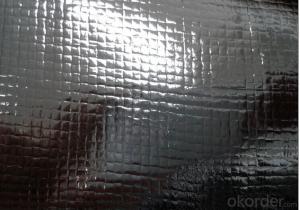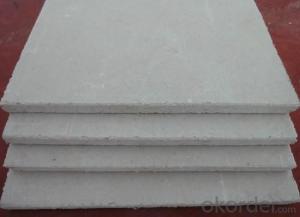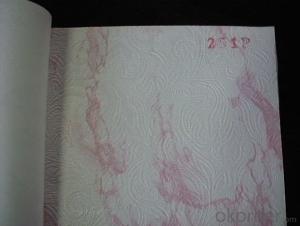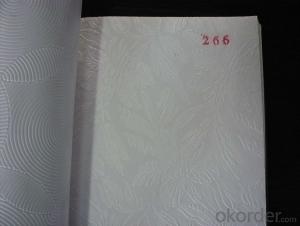Stainless Steel For Piercings
Stainless Steel For Piercings Related Searches
Best Paint For Stainless Steel Blanket Insulation For Steel Buildings Primer For Galvanized Steel Foam Filter For Stainless Steel H S Code For Stainless Steel Surface Grinding Wheels For Stainless Steel Surface Grinding Wheels For Hardened Steel Hole Saw For Stainless Steel Paint For Stainless Steel Stainless Steel For BbqHot Searches
Steel Mesh Panels For Sale Price For Stainless Steel Scrap Scrap Price For Stainless Steel Price For Stainless Steel Stainless Steel Plate For Sale Stainless Steel Tank For Sale Stainless Steel Sheets For Sale Cheap High Tea Sets For Sale Stainless Steel Tanks For Sale Stainless Steel For Sale High Density Fiberboard For Sale Solar Hot Water Collectors For Sale Scaffolding For Sale In Uae Scaffolding For Sale In Ireland Scaffolding For Sale In Houston Type Of Inverter For Solar Price Of Shipping Containers For Sale Types Of Inverter For Solar Stock Price For Aluminum Steel Mesh Panels For SaleStainless Steel For Piercings Supplier & Manufacturer from China
Okorder.com is a professional Stainless Steel For Piercings supplier & manufacturer, offers integrated one-stop services including real-time quoting and online cargo tracking. We are funded by CNBM Group, a Fortune 500 enterprise and the largest Stainless Steel For Piercings firm in China.Hot Products
FAQ
- The price range of stainless steel sheets can vary depending on factors such as size, thickness, grade, and quantity. Generally, stainless steel sheets can range from around $20 to $200 per sheet.
- Yes, stainless steel sheets can be used for decorative backsplashes. Stainless steel is a versatile and durable material that is commonly used in kitchen and interior design. It offers a sleek and modern look, making it a popular choice for contemporary and industrial-style kitchens. Stainless steel backsplashes are not only visually appealing but also highly functional, as they are resistant to heat, stains, and water. Moreover, stainless steel is easy to clean and maintain, making it a practical option for a backsplash in a busy kitchen. Whether you prefer a polished, brushed, or patterned finish, stainless steel sheets can be customized to suit your aesthetic preferences, allowing you to create a stylish and eye-catching backsplash that complements your overall design scheme.
- Stainless steel sheets typically do not have a fire resistance rating on their own as they are not inherently fire resistant materials. However, stainless steel can exhibit good fire resistance properties due to its high melting point and low thermal conductivity. This means that stainless steel sheets are less likely to melt or transfer heat during a fire, which can help to prevent the spread of flames. Additionally, stainless steel is also corrosion resistant, which can further enhance its performance in fire situations. However, it is important to note that the fire resistance of a structure or system is determined by a combination of various factors, including the overall design, construction, and use of fire-resistant materials. Therefore, the fire resistance rating of stainless steel sheets may vary depending on the specific application and the overall fire protection measures in place.
- Yes, stainless steel sheets can definitely be used for decorative room dividers or partitions. Stainless steel is a versatile material that offers a sleek and modern look, making it a popular choice for contemporary interior designs. Its durability and resistance to corrosion also make it suitable for long-term use in various settings, including homes, offices, or commercial spaces. Additionally, stainless steel sheets can be customized with different finishes, patterns, or perforations to enhance their decorative appeal and create unique room dividers or partitions.
- To prevent discoloration or staining on stainless steel sheets, there are several steps you can take: 1. Regular Cleaning: Clean the stainless steel sheets regularly using mild soap or detergent and warm water. Avoid using abrasive cleaners or scrub brushes that can scratch the surface. After cleaning, rinse thoroughly with clean water and dry with a soft cloth to prevent water spots. 2. Avoid Harsh Chemicals: Avoid using harsh chemicals such as bleach, ammonia, or chlorine-based cleaners on stainless steel sheets. These chemicals can cause discoloration or staining. Instead, opt for stainless steel-specific cleaners or natural cleaners like vinegar or lemon juice. 3. Proper Storage: Store stainless steel sheets in a clean and dry environment to avoid exposure to moisture or humidity. Moisture can lead to corrosion or rust, which can cause discoloration. If the sheets are stored outdoors, cover them properly to protect them from rain or snow. 4. Use Protective Coatings: Applying a protective coating or sealant on stainless steel sheets can help prevent discoloration or staining. There are various products available in the market specifically designed for stainless steel protection. Follow the manufacturer's instructions for application and reapplication, if necessary. 5. Avoid Contact with Reactive Metals: Avoid contact between stainless steel sheets and other reactive metals such as iron, copper, or aluminum. When these metals come into contact with stainless steel, a chemical reaction called galvanic corrosion can occur, leading to discoloration and staining. Ensure separation or isolation between stainless steel and reactive metals. 6. Regular Maintenance: Regularly inspect the stainless steel sheets for any signs of discoloration, staining, or damage. Address any issues promptly to prevent further deterioration. If you notice any stubborn stains, use a non-abrasive stainless steel cleaner and a soft cloth to gently rub the affected area in the direction of the grain. By following these preventive measures, you can maintain the appearance and integrity of stainless steel sheets, ensuring they remain free from discoloration or staining for an extended period.
- Yes, stainless steel sheets can be used in construction projects. They are commonly used for various applications in construction due to their durability, corrosion resistance, and aesthetic appeal. Stainless steel sheets are often used for roofing, cladding, structural components, and decorative purposes in buildings and infrastructure projects.
- To prevent fretting corrosion on stainless steel sheets, there are several preventive measures that can be taken: 1. It is crucial to handle stainless steel sheets properly, avoiding any scratching or rubbing of the surface that could lead to fretting corrosion. Gloves should be worn and contact with other metals or rough surfaces should be avoided. 2. Regular cleaning of the stainless steel sheets using mild detergents or specialized stainless steel cleaners is recommended. This helps to remove contaminants that can initiate corrosion and prevents the build-up of dirt or grime that can contribute to fretting corrosion. 3. Applying a suitable lubricant or anti-seize compound on the contact surfaces can minimize friction and prevent fretting corrosion, especially in applications with repeated movement or vibration. 4. Whenever possible, it is advised to isolate stainless steel sheets from direct contact with other metals. This can be achieved by using insulating materials, gaskets, or non-metallic spacers to create a barrier between the stainless steel and potentially corrosive materials. 5. Regular inspection of the stainless steel sheets is important to detect any signs of fretting corrosion, such as small cracks, discoloration, or pitting. Early detection allows for prompt action to prevent further damage. 6. Applying a protective coating, such as a passivation treatment or a corrosion-resistant paint, can provide an additional layer of protection against fretting corrosion. It is recommended to consult with a professional to determine the most suitable coating for the specific application. 7. Proper storage of stainless steel sheets is essential. When not in use, they should be stored in a clean, dry environment to minimize exposure to moisture or corrosive substances. The storage area should be well-ventilated and free from any contaminants that could potentially initiate fretting corrosion. By following these preventive measures, the risk of fretting corrosion on stainless steel sheets can be significantly reduced, ultimately prolonging their lifespan.














































